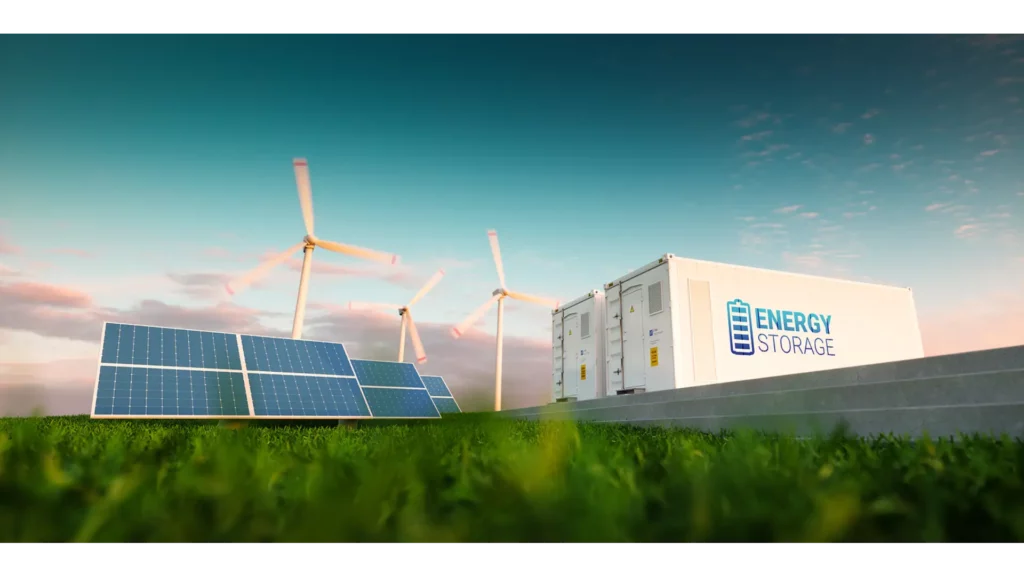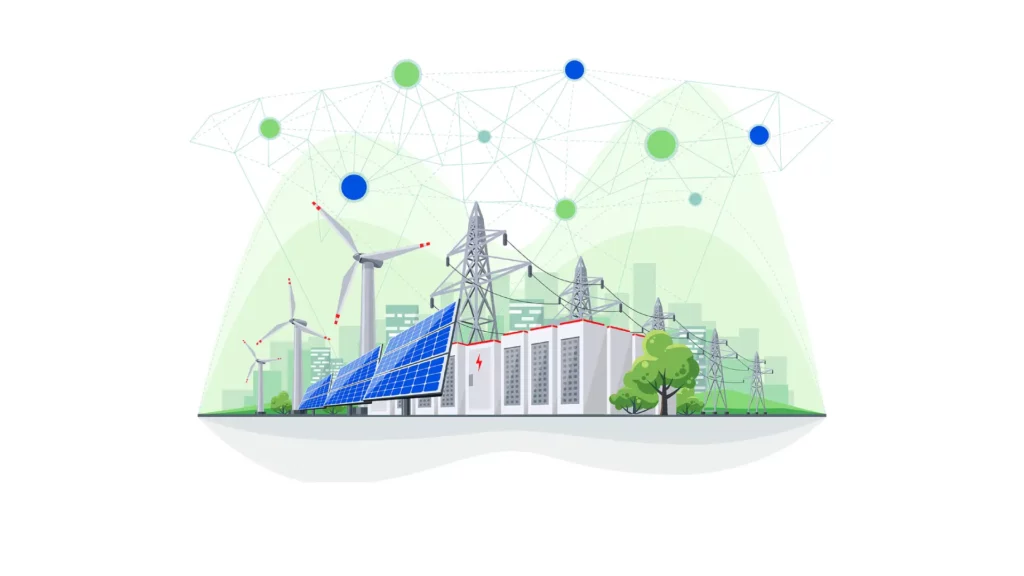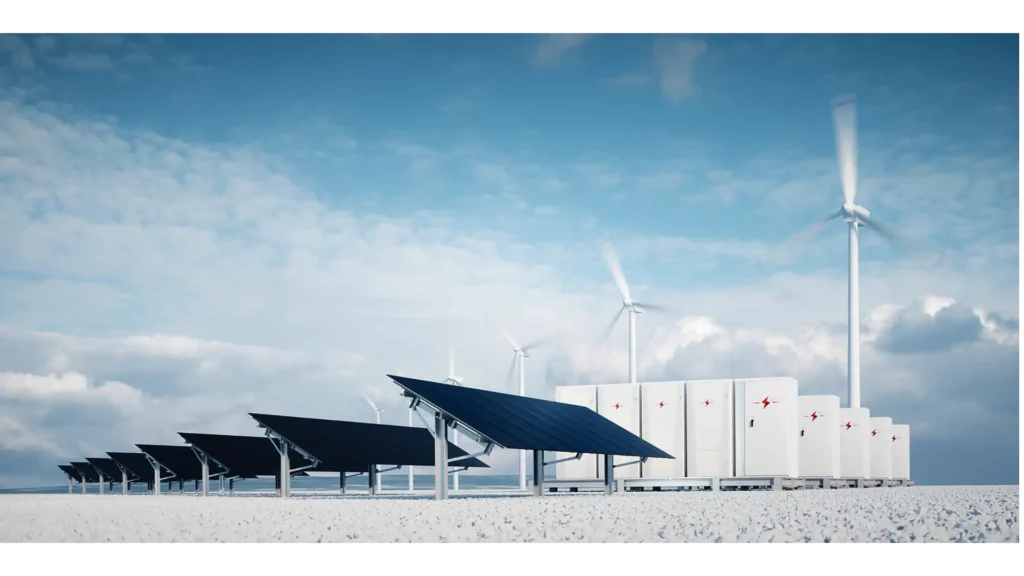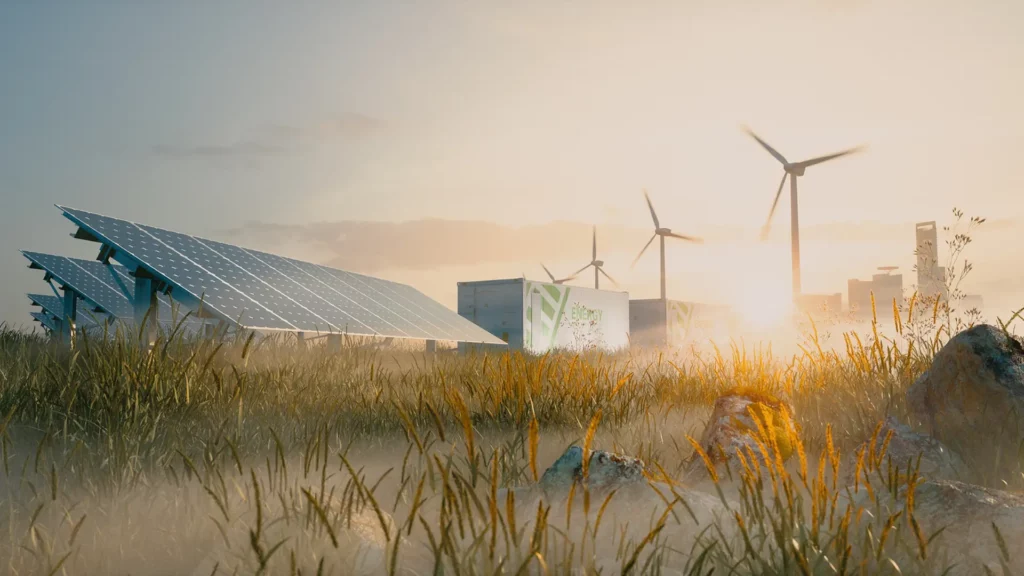In today's world, the shift towards renewable energy is not just a trend but a necessary transition to combat climate change and reduce our carbon footprint.
However, the intermittent nature of sources like solar and wind power poses a significant challenge. This is where renewable energy storage technology comes into play, acting as a cornerstone for a sustainable energy future.
In this comprehensive guide, we delve deep into the world of renewable energy storage technology, exploring its mechanisms, benefits, challenges, and future of energy storage technology.
Understanding Renewable Energy Storage Technology
Renewable energy storage technology is a system designed to store energy generated from renewable resources, such as the sun and wind, for later use.
This technology is critical for balancing supply and demand, ensuring the reliability of power regardless of weather conditions or time of day.
It encompasses a variety of technologies, including batteries, pumped hydro storage, flywheel energy storage, and more.

Why Renewable Energy Storage is Crucial
The integration of renewable energy storage technology into our power systems addresses several critical issues:
- Stabilizing the Grid: It helps in balancing the grid by storing excess energy during low demand and releasing it during peak demand.
- Enhancing Reliability: It ensures a constant energy supply, even when renewable sources are not generating electricity.
- Improving Efficiency: By storing energy for later use, we can optimize the production of renewable energy and reduce waste.
- Reducing Carbon Emissions: Storage technologies enable a greater use of renewable energy, which directly contributes to lower carbon emissions by reducing reliance on fossil fuels.
- Facilitating Energy Independence: By making it possible to store and use local renewable energy sources, it decreases dependence on imported fuels, enhancing energy security.
- Supporting the Transition to Renewables: Energy storage is essential for managing the variability of renewable energy and making it a viable replacement for traditional energy sources.
- Enabling Microgrids: Storage technologies are crucial for the development and efficiency of microgrids, which can operate independently or in conjunction with the main grid, providing resilience and reliability.
- Increasing Energy Accessibility: In remote or underdeveloped areas, energy storage paired with renewable generation can provide reliable electricity where traditional grid infrastructure may be impractical or too costly.

Types of Renewable Energy Storage Technologies
Renewable energy storage technology is diverse, with each type offering unique advantages for different applications.
- Battery Storage
Battery storage, particularly lithium-ion batteries, has become synonymous with renewable energy storage technology.
They offer high energy density, long life cycles, and efficiency, making them ideal for residential and commercial energy storage solutions.
- Pumped Hydro Storage (PHS)
Pumped hydro storage is one of the oldest and most mature forms of energy storage.
It involves pumping water to a higher elevation during periods of low energy demand and releasing it through turbines to generate electricity when demand is higher.
- Flywheel Energy Storage
Flywheel energy storage systems store kinetic energy in a rotating mass. They are known for their rapid response times and durability, making them suitable for applications requiring high power for short durations.
- Thermal Energy Storage
Thermal energy storage technologies store heat or cold to be used for heating, cooling, or power generation at a later time.
This category includes molten salt storage, which is particularly relevant for concentrating solar power plants.

Advantages of Renewable Energy Storage Technology
The deployment of renewable energy storage technology offers myriad benefits, crucial for our transition to a sustainable energy ecosystem.
- Enabling a Renewable-Powered World: By addressing the intermittency issues of renewable sources like solar and wind, storage technologies enable a greater integration of renewables into the energy mix, moving us closer to a fully renewable-powered future.
- Grid Stability and Reliability: Energy storage systems are key to maintaining the balance between energy supply and demand, thereby enhancing the stability and reliability of the power grid. This is essential for preventing power outages and ensuring a steady supply of electricity.
- Energy Security: By facilitating the use of local renewable energy sources, storage technology reduces our dependence on imported fossil fuels, enhancing national energy security and protecting against global market fluctuations.
- Economic Benefits: The development and deployment of renewable energy storage technologies drive economic growth by creating jobs, fostering innovation, and reducing energy costs over time. This contributes to a healthier economy and supports the transition to sustainable energy sources.
- Environmental Protection: By enabling a shift to renewable energy, storage technology plays a critical role in reducing greenhouse gas emissions and combating climate change. This helps in preserving the environment and ensuring a livable planet for future generations.
- Flexibility in Energy Use: Energy storage provides consumers and businesses with more control over their energy usage, allowing for the optimization of energy consumption and cost savings. This flexibility is particularly beneficial as electricity pricing and demand patterns evolve.
- Support for Remote and Underserved Areas: Renewable energy storage can play a pivotal role in providing reliable electricity to remote or underserved areas, where traditional energy infrastructure may be lacking or non-existent. This can improve living standards and enable economic development in these regions.
- Resilience Against Natural Disasters: In areas prone to natural disasters, renewable energy storage systems can enhance resilience by ensuring that power remains available even when parts of the grid are damaged or offline, aiding in disaster response and recovery efforts.

The Better Energy Storage Technology Act: A Legislative Milestone
The Better Energy Storage Technology Act is a significant legislative step aimed at strengthening the energy storage sector.
It highlights the government's dedication to advancing energy storage solutions to improve the efficiency, reliability, and sustainability of global energy systems.
The Act focuses on overcoming technological and economic hurdles, promoting innovation, and enhancing the integration of renewable energy into the grid.
It marks a recognition of energy storage technology's critical role in driving a cleaner, more resilient energy future and emphasizes its importance in the shift towards renewable energy.

Exploring Alternative Energy Storage Technologies
As the world shifts towards a more sustainable energy future, the importance of diversifying our energy storage solutions becomes paramount.
- Green Energy Storage Technology
Green energy storage technology is pivotal for efficiently storing renewable energy in an environmentally friendly manner.
This technology ensures that renewable energy is readily available, even during periods of low generation, significantly contributing to a sustainable energy landscape.
- Solar Energy Storage Technology
Solar energy storage technology enhances the utility of solar power systems by storing excess energy produced during peak sunlight.
This ensures the availability of solar energy round the clock, bolstering solar power's reliability and efficiency as a sustainable energy source.
- Wind Energy Storage Technology
Wind energy storage technology mitigates the variability of wind power by storing energy generated during high wind speeds.
This enhances the effectiveness of wind farms, ensuring a consistent and reliable energy supply from wind, even during periods of low wind speeds.
- The Role of Alternative Energy Storage Technologies
Exploring and adopting alternative energy storage technologies is essential for transcending the limitations of traditional storage methods.
These innovative technologies, including advanced batteries and other novel storage solutions, offer more efficient and sustainable ways to store energy, supporting the global transition to a renewable energy future.

Frequently Asked Questions (FAQs) About Renewable Energy Storage Technology
1. What exactly is renewable energy storage technology?
Renewable energy storage technology refers to systems and devices designed to store energy generated from renewable sources such as solar, wind, and hydroelectric power. These technologies play a crucial role in capturing and storing excess energy for later use, thereby addressing the intermittency of renewable energy sources and ensuring a reliable and consistent power supply.
2. How does renewable energy storage technology contribute to a sustainable energy future?
By mitigating the intermittency issues associated with renewable energy sources, storage technologies enable a higher penetration of renewables into the energy mix. This, in turn, reduces our dependence on fossil fuels, lowers greenhouse gas emissions, and promotes environmental sustainability. Additionally, renewable energy storage enhances grid stability and reliability, supporting the transition to a cleaner and more resilient energy system.
3. What are the main types of renewable energy storage technologies available today?
There are several types of renewable energy storage technologies, each with its own unique characteristics and applications. These include battery storage (such as lithium-ion batteries), pumped hydro storage, flywheel energy storage, thermal energy storage, and emerging technologies like hydrogen storage. Each of these technologies offers distinct advantages and is suitable for different use cases and environments.
4. What are some of the key challenges facing the widespread adoption of renewable energy storage technology?
While the potential benefits of renewable energy storage are significant, several challenges hinder its widespread adoption. These include high initial costs, technological limitations such as efficiency and capacity constraints, and regulatory and market barriers. However, ongoing research, innovation, and supportive policies are helping to address these challenges and drive the deployment of renewable energy storage solutions.
5. How can individuals and organizations contribute to the advancement of renewable energy storage technology?
There are several ways individuals and organizations can contribute to the advancement of renewable energy storage technology. This includes supporting research and development efforts, investing in renewable energy projects with integrated storage solutions, advocating for supportive policies at the local, national, and international levels, and adopting energy-efficient practices to reduce overall energy consumption.
6. What role does renewable energy storage technology play in addressing climate change?
Renewable energy storage technology plays a crucial role in mitigating climate change by facilitating the transition to low-carbon energy systems. By enabling the integration of renewable energy sources into the grid and reducing reliance on fossil fuels, storage technologies help to lower greenhouse gas emissions and combat global warming. Additionally, they contribute to enhancing energy security and resilience in the face of climate-related challenges.
7. What are some future trends and developments we can expect in renewable energy storage technology?
Looking ahead, we anticipate continued advancements in battery technology, with a focus on improving energy density, safety, and affordability. Additionally, we expect to see greater integration of renewable energy storage systems with smart grid technologies, artificial intelligence, and the Internet of Things, enabling more efficient and dynamic management of energy resources. Policy support and increased investment will also play a crucial role in driving innovation and accelerating the deployment of renewable energy storage solutions.
Renewable Energy Storage Technology Conclusion
Renewable energy storage technology is not just an accessory to the renewable energy sector; it is a fundamental pillar that ensures the reliability, efficiency, and sustainability of our energy systems.
As we continue to witness rapid advancements in this field, the dream of a fully renewable-powered future becomes increasingly tangible.
By addressing the current challenges and capitalizing on the opportunities ahead, we can unlock the full potential of renewable energy storage technology, paving the way for a greener, more sustainable world.

